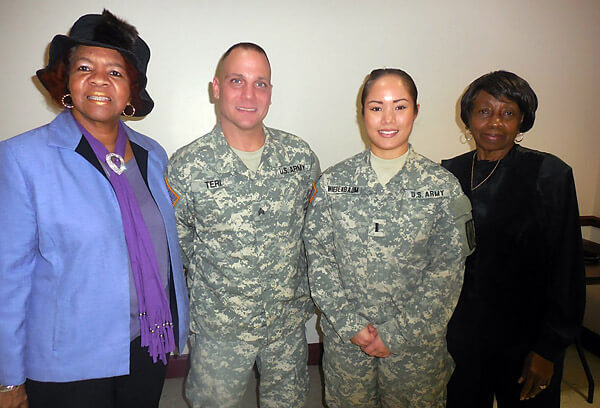To a predominantly Caribbean and African-American packed room at The Greater Allen A.M.E. Cathedral of New York in Queens, N.Y., U.S. Army National Guard Sergeant Teri said emphatically that, “A disaster is going to happen.” Technical, national and man-made disasters were the three forms of catastrophes he highlighted.
“We have the highest potential for disaster,” he unequivocally stated. “I am here to give you a reality check. We are surrounded by water. If you live near a flood zone, you need to start thinking about a disaster.” He noted preparation takes time. However, he assured the attentive group advance planning involves simple steps.such as meeting with your family. Have a place to meet, if a disaster occurs, he stressed. Take your animals with you. Build an emergency supply kit. Be aware of NY-ALERT – an emergency notification service. Be proactive and get involved by helping a neighbor, he strongly encouraged the estimated near-capacity throng, according to one of the event’s organizer (The Greater Allen A.M.E. Cathedral of New York Ministry Security) member real estate agent Shirley Phipps
Despite the intensity of the subject, the lecturer calmly mentioned immediate action to take. He suggested to the attendees to start condensing combustible material scattered throughout their property. Update smoke detectors to coincide with an anniversary or birthday. Be prepared to turn off electricity, gas and water and if a ladder or toolbox is needed, as support, have it in the vicinity.
Among the priceless hodgepodge of advice dispensed at this free-and-open-to-the- public training was, start digitizing pictures and important documents. Learn CPR. Often water needs to be heated, boil it for at least two minutes. If your a neighbor is trapped, stay calm and talk to her and remain visible. If evacuation is mandatory, leave a noticeable note.
Although organizing for a disaster is a challenging process, Teri urged every member to build an individualized Emergency Survival Kit for at least seven to 10 days. A few of the updated items it should contain are:
.Food sustainable
.Hygiene Products
.Tools
.A backpack to be used
for evacuation
.4” x 4” Gauze
.Ace Bandage
Roll of Medical Tape
.Antiseptic Wipes
.Bottle of Saline
.Medical Gloves
.Assorted Band-aids
.Whistle
.Work Gloves
.Eye Goggles
.Emergency Blanket
.Extra Batteries
.Dust Mask
.Sanitation Wipes
.Manual Can Opener
.Flashlight including
batteries
.Multi-tool with pliers
.Crank-Operated Emergency
Radio
.Reflective Vest
.Sleeping Bag
For additional information on how to get involved with volunteer programs and online training, visit prepa


























